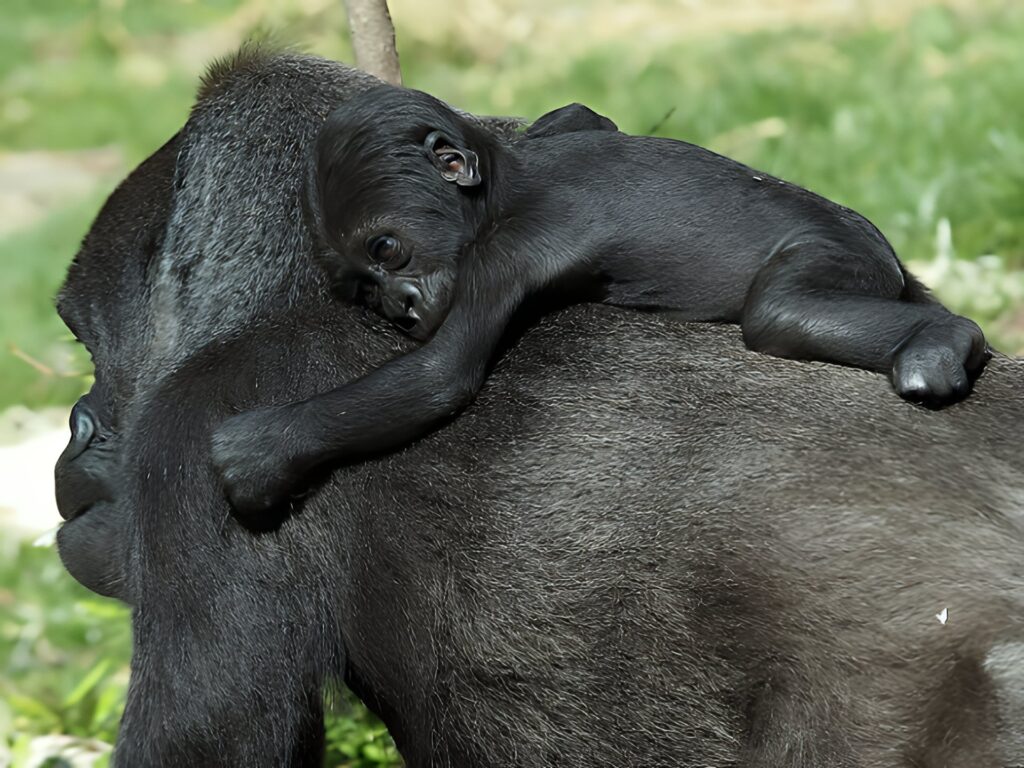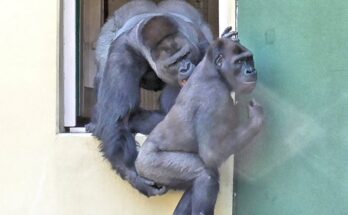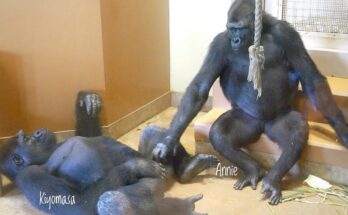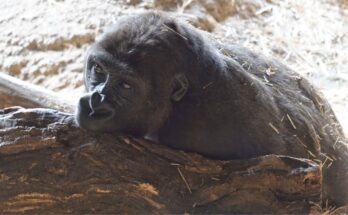Structure of Gorilla Families
Gorillas live in groups, often referred to as “family units,” comprising:
- Silverback (Alpha Male): The dominant male leader, typically the largest and strongest. The silverback decides the group’s movement, ensures safety, and protects its members.
- Adult Females: These adult females play key roles in nurturing the young and maintaining cohesion within the group.
- Young Gorillas: The young receive protection and guidance from the silverback and adult females.
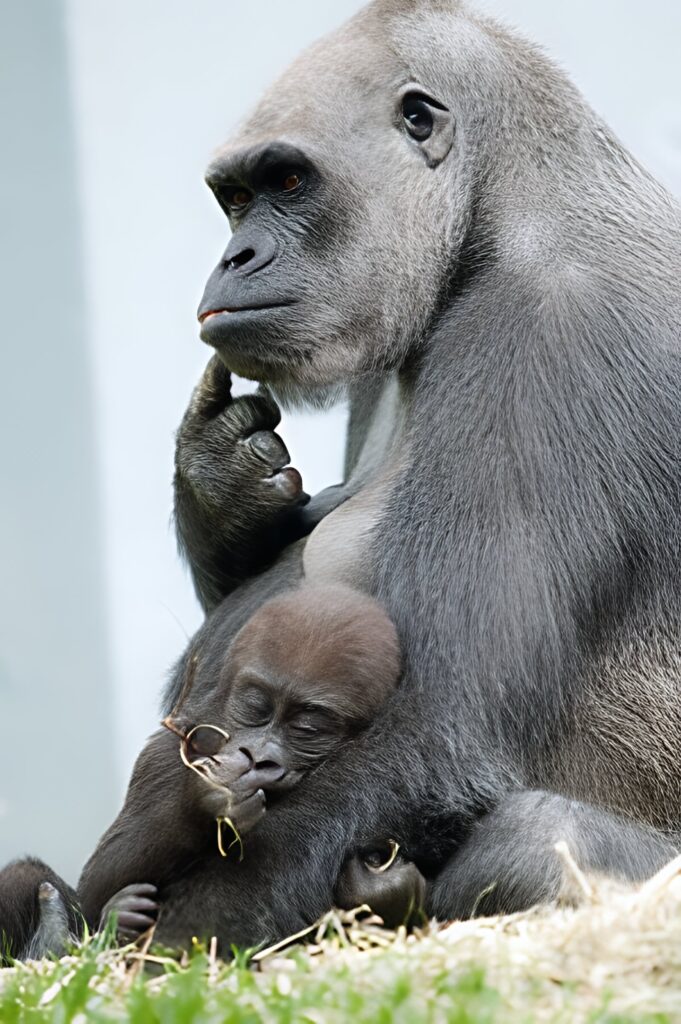
Family Behaviors
Gorillas are renowned for their rich social behaviors:
- Caring for the Young: Young gorillas are often carried by their mothers for the first 3-4 years of life, learning to climb trees and forage for food.
- Communication: Gorillas communicate through various means, including vocalizations, gestures, and body language such as chest-beating or intense gazes.
- Protecting the Group: In the face of danger, the silverback leads by confronting threats or guiding the group to safety.
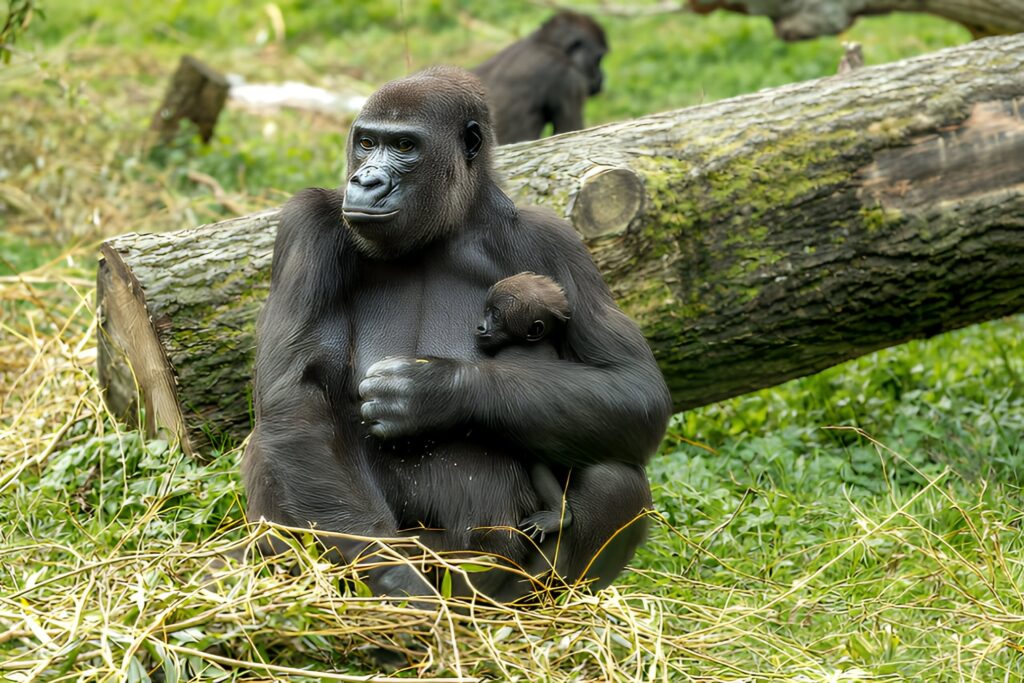
Ecological Role of Gorillas
Gorillas are crucial not only to tropical rainforest ecosystems but also to preserving biodiversity:
- Seed Dispersal: Gorillas consume a variety of fruits, aiding in the dispersal of seeds across the forest.
- Ecosystem Engineering: Their movements and foraging create opportunities for other species to thrive.
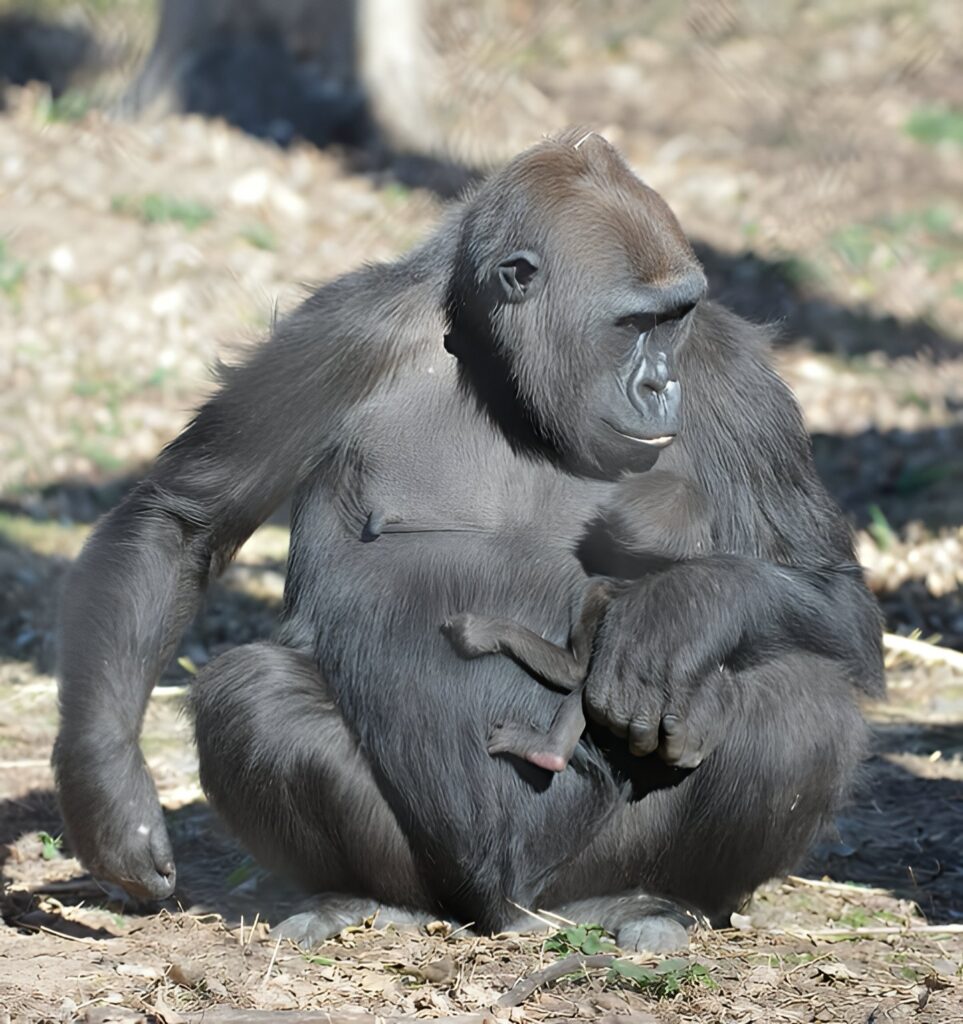
Challenges in Gorilla Conservation
Despite their strength and majesty, gorillas face numerous threats:
- Habitat Loss: Deforestation for timber extraction and agricultural expansion is the primary cause.
- Poaching: Gorillas are often hunted for bushmeat or captured for illegal trade.
- Infectious Diseases: Recently, diseases like influenza transmitted from humans pose significant risks.
